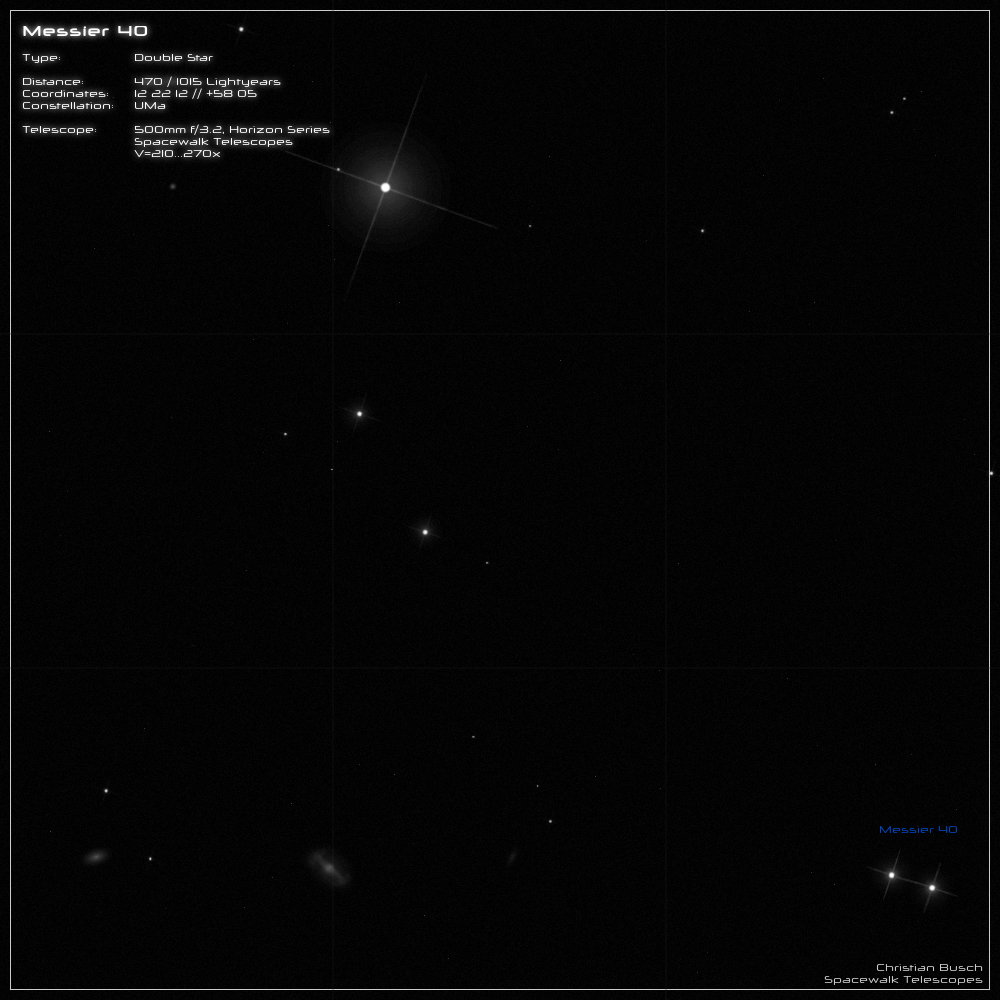Messier 40 - Double Star
Messier 40 is a double star (DS) in the constellation of the Big Dipper (UMa), which Charles Messier mistakenly included as a
nebula in his well-known catalog in 1764. The DS also bears the designation “Winnecke 4”.
The two stars are 9.6mag and 10.1mag bright respectively and have an apparent separation of 50”. For a long time it was not clear
whether this was just an optical pair or a true double star. Only high-precision measurements by GAIA were able to confirm the latter.
Messier 40 is therefore two stars that happen to be in the same direction, but at a distance of 470 and 1015 light-years respectively.
The two stars are therefore separated by more than 500 light-years. HD 238108, on the other hand, is a true double star and has an
18mag bright white dwarf as a companion at a distance of 5”.
There are also two nice galaxies in the immediate vicinity. NGC 4290 (the brighter of the two) is a so-called radio galaxy at a distance
of around 140 million light-years, which is 12.8mag bright. NGC 4284, on the other hand, is about 195 million light-years away from
Earth and only about 14.7mag bright.
----------------------------------------------------------------------------------------------------------------------------------------------
In my 20” telescope, Messier 40 is located in the middle of a beautiful star field. One of the two stars appears yellowish, the other shines
in a soft white-blue.
A total of 4 galaxies can be observed in the immediate vicinity - the bright NGC 4290 shows a prominent core area with a stellar nucleus
as well as a bar and slight hints of spiral arms. NGC 4284, on the other hand, is much fainter and shows no details apart from a slightly
brighter central region. The third galaxy (bottom center) appears at 270x as a very faint, slightly oval nebula, while the fourth galaxy
(top left next to the bright star) has a high surface brightness and is therefore quite easy to see.

